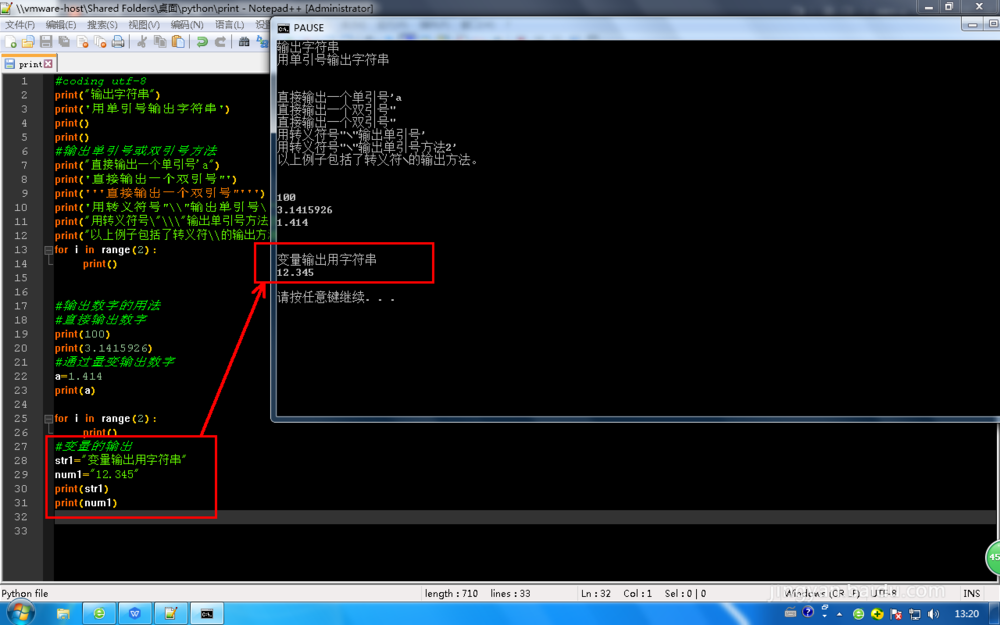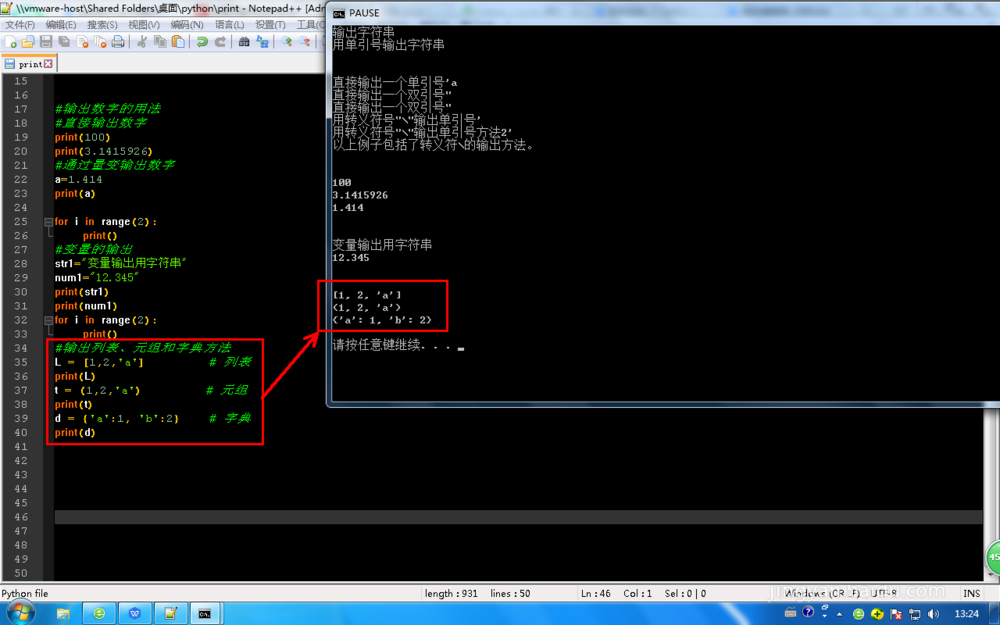You are here
python python3 的print()函数的用法图文讲解 有大用 有大大用
Python 3 print 函数 基础代码
1、print语法格式
print()函数具有丰富的功能,详细语法格式如下:
print(value, ..., sep=' ', end='\n', file=sys.stdout, flush=False)
默认情况下,将值打印到流或sys.stdout。
可选关键字参数:
file:类文件对象(stream); 默认为当前的sys.stdout。
sep:在值之间插入的字符串,默认为空格。
end:在最后一个值后附加的字符串,默认为换行符。
flush:是否强制刷新流。
2、sep可选关键字参数
sep参数可以在值之间插入字符串,默认值为空格。
例:
print('1','2','3','4',sep = "插入")
输出结果:
1插入2插入3插入4
3、file可选关键字参数
file参数默认值为sys.stdout,代表系统标准输出,即屏幕。我们可以通过改变该参数使print()函数输出到特定的文件中。
例:
f = open(r"F:\text.txt","w") # 打开文件,以便写入
print('test',file = f) # 输出到文件
f.close() # 关闭文件
运行后,可以看到test输出到text.txt文件中。
4、end可选关键字参数
end参数默认为"\n"(换行符),如果想在print()函数输出之后输出别的字符串,可以重设end参数。
例:
print('1','2',end = "最后")
输出结果:
1 2最后>>>
运行后,我们可以看到,print()函数输出之后不会换行,且在最后一个值后面附加了“最后”。
5、flush可选关键字参数
flush参数用于控制输出缓存,一般为了可以获得较好的性能,保持为False即可。
6、print()打印中比%格式符更方便的一个打印方式print(f"")
有没有小伙伴到现在还在用以下的%d%f%s ...等方式打印
age = int(input("Please input your age:"))
name = input("Please input your name:")
print("Ok,your name is %s, and your age is %d." % (name, age))
当然,也不是说这种方式不能用,但是我们有一种更加直观并且方便的用法--print(F”“)。
以下是改进后的代码
age = int(input("Please input your age:"))
name = input("Please input your name:")
print(f"Ok,your name is {age}, and your age is {name}." )
这样写的话是不是比较方便,但一定要记住引号前的 f 一定不能忘记。
Python 3的print是一个函数,与Python2用法完全不一样,现将Python3的print()函数用法满汇总如下,所有功能均由本人亲测。
print()输出字符串用法。
例如:
print("输出字符串")
print('用单引号输出字符串')
单引号中输出双引号,双引号中输出单引号,转义符输出单、双引号和转义符操作方法。
#输出单引号或双引号方法
数字的输出方法,直接输出和通过变量输出,语句中均无引号。
变量的方法输出字符串或数字。
输出列表、元组和字典方法
print的格式化输出
print()函数输出换行控制。
一个print()语句换行输出,在需要换行的位置加入"\n"换行符即可。
来自 https://www.jb51.net/article/165463.htm








